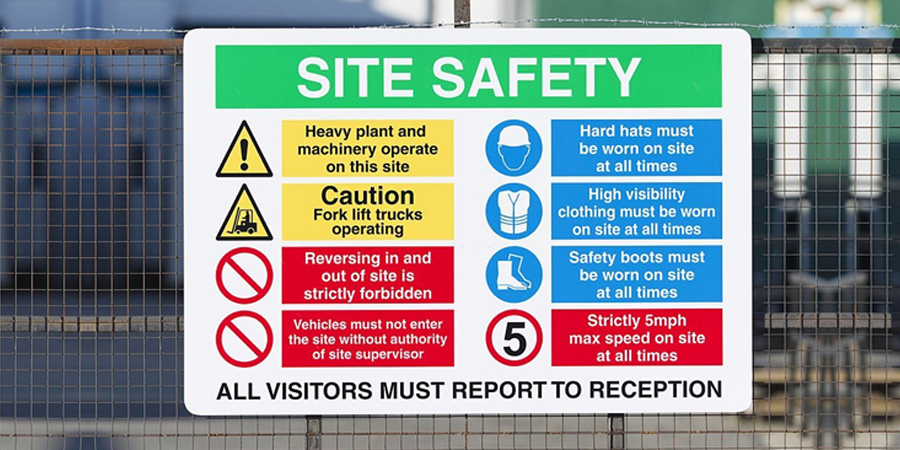Risk perception is fundamentally a subjective matter – no matter how hard analysts strive to make the topic objective the fact remains that, as Oscar Wilde once said, ‘A truth ceases to be a truth as soon as two people perceive it.’
Talking about the Degree Of Control
Voluntary risks get more readily accepted than those that are imposed.
For example, someone who believes that wearing a helmet at a construction site follows all the rules and guidelines that are instructed by the safety professionals – one takes pride in continuing with the same. But the same person, when standing near his building near construction work, perceived the area as ‘low risk’ and does not even consider ‘helmet’. The perception that he is out of site and risks are reduced lets him take that risk.
The result – he might be injured if there’s any falling object or hazardous material near him.
Similarly, most people feel safer while driving a car on a highway instead of driving in a city – risks in both situations remain the same. The view changes, though.
The feeling of being in control is one of the reasons!
The desire for control also means that most people generally resist risks that they feel they are being forced to accept.
In an industrial workplace, one needs to alter this mindset by normalizing safe behaviours instead of focusing on measuring the length of time or the type of work without an injury.
Addressing behaviours onsite
Safety should be everyone’s concern. As for safety professionals, it’s important to ensure that workers feel safe and valued when onsite, and stand responsible for their own safety.
Talk about BBS, and it is more about a program focused on mitigating accidents by changing workers’ mindsets, habits, and behaviours on the worksite. Through repetition and positive reinforcement, it ingrains safe behaviours to ensure that safe practices are always top-of-mind.
Key essentials in a BBS system that inculcate safety systems include-

a. Open and honest Communication
In a feedback-rich environment, employees can freely voice their concerns and especially management – it conducts consistent awareness programs.
b. A good reporting Culture
One should try promoting a culture where are all dangerous activities/behaviors get duly reported to take timely actions.
c. Management commitment
Company-wide transparency in following safety procedures from owners, safety officers, and high-ranking officials.
d. Timely Reactions
One should be quick to act on unsafe behavioural reports, align teams to rapidly spread precautionary measures before it escalates into an incident.
By following the BBS culture on a worksite, workers become more aware of harmful activities and how those activities affect themselves and their co-workers. They get empowered to make safe decisions.
The execution success depends upon the support of all employees, from the CEO to superintendents to front-line workers. Aligning everyone with clear goals and visions will help change the culture and empower everyone to put “safety first.” Superintendents cannot always monitor their team, nor are they expected to.
Appropriate training via visuals comes into play when employees are ready to play their part.
When industries alter their approaches time and again, the fact that they might lose interest is thoroughly managed. Rethinking what is going wrong – firstly, showing them and secondly, encouraging them, both can be communicated well enough.
Considering common high-risk construction activities is a great place to start the focus on enabling safe behaviour. These include working at height, mobile equipment and driving, material handling, confined spaces, electrical hazards, hazardous chemicals, and groundworks.
Show them movies that teach them how to perform tasks, and what are the areas they need to focus upon (apart from performing the given SOP). In this way, you are making them liable for their actions, but with a safety shell around them – which confides the feeling of safety within.
Also, you are effectively addressing their at-risk behaviours in a variety of actions they conduct while working – this helps them to relate to the scenes and learn as they understand through simplistic teachings.
You can create a flow – starting with documentation of the SOPs to explaining them through training, then observing their working styles and conducting appropriate training that corrects their behaviours.
Reason – While it is important to address and change potential hazards and behaviours, it is also important to draw attention to positive behaviours. Reinforce and use them as examples of the preferred worksite actions.
Each and every step can be tracked with efficiency – retraining can be aimed for the targeted individuals. In this way, apart from making individuals accountable for their actions and making them aware of their behaviors, the safety teams are creating teams that work with each other.
Still, there lies a question!
Can the behavioural change happen from the roots?
Is it possible?
Why is one sceptical about the implementation?
In general, people tend to seek out information that confirms their opinions and they tend to overvalue information that confirms those opinions.
We also tend to expose ourselves to situations and people that confirm our existing beliefs. For example, most people will watch TV channels that reinforce their political opinions. This can lead to shock when it turns out in an election that those beliefs did not constitute a majority opinion.
So, what is needed? Focus on ways that target:

1. Unbiased approach
It is particularly important to recognize this trait when conducting incident investigations. Persons leading an investigation listen to what is being said without interjecting with their own opinions or prejudices.
2. Provide support
Front-line workers are putting themselves at risk daily – proper training gives them support to act safely when risky behaviors appear more efficient or convenient.
3. Target safety from top to bottom
For them to feel supported, safety must come from the top. Superintendents help create this support system by emphasizing safety as a core value and acting as a model for safety on the worksite.
4. Engage participation
To imbue a culture of active participation, companies should make sure that their staff feels like valued contributors to your safety culture. Rewarding acts must be noticed and appreciated enough. A good environment is when the senior safety professionals delicately convey unsafe acts using a corrective action process.
5. Realize that safety is a goal, not a target
Superintendents influence behaviours, which impacts how safety is valued onsite. Workers must understand that safety is more than a goal or a training program: it is a core value that should be taken seriously during all aspects of a job. Reinforce safe behaviours by reviewing hazards and dangerous activities with your team and working together to find safe solutions. Superintendents should be constantly engaging and assisting their team with safe worksite behaviours.
We all know the basic concepts of BBS – pointing out to employees, how they contribute to a safe work environment by educating them when they are performing safe or unsafe acts. This can be an essential part of a larger safety system that contributes positively to the health& safety culture.



